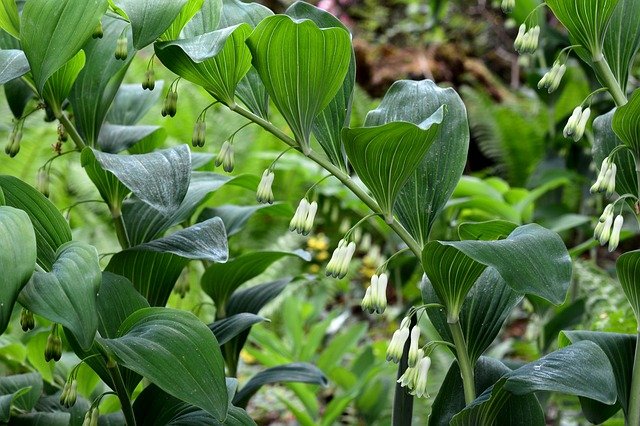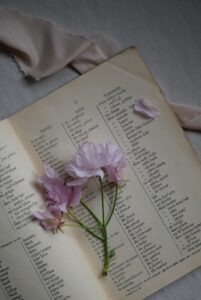True Solomon’s Seal (Polygonatum multiflorum and other varieties)
Family – Liliaceae
I first became familiar with True Solomon’s Seal through a discussion with a friend We were talking about herbs to help relieve prolapsed organs. She suggested Solomon’s Seal root because of its uncanny ability to manage tendons and ligaments, whether too tight or too loose. (more about this later) I was intrigued and set about developing a relationship with the plant, one I am happy to say is nicely blooming.
There isn’t much written about this amazing plant. Why, I don’t know. There are over 50 varieties of Solomon’s seal all over the world and several traditional healing modalities familiar with it. You would think everyone would want to use it. I suppose it is a good thing that It is not that well known. If it were, wild supplies would be dwindling. Yet, you do not have to wildcraft this plant because it grows readily in the garden.
Botanical Information about Solomon’s Seal
Solomon’s seal is a member of the Lily family and a close relative of Lily of the Valley. It is native to lightly wooded areas of North America, Europe, and Asia. In North America, Solomon’s Seal ranges from eastern woodlands, into the Midwest. It can be found as far west as the Rocky Mountains, although False Solomon’s Seal is more likely found in the Rockies in my experience.
Description
This plant has slightly zigzagging, singular stems 18 to 24 inches long, emerging from creeping white rootstalks called rhizomes. Rhizomes are a special kind of roots that are more like underground stems. In this case the stems are thick, white, twisted, and full of knots, resembling arthritic hands or a twisted spine. The roots (or rhizomes) have circular scars at predictable intervals where leaf stems emerged in the past.
The stems begin straight, bending into a graceful arc about ½ way to the end. Leaves begin somewhere along the way. They are pale green, broadly oval, alternate, and clasping with longitudinal ribbing. The flowers originate at the leaf axils, appearing in drooping clusters of 2 to 7 flowers. The flowers are small, tubular in shape and resemble little bowling pins. They are creamy or waxy white in color with yellow or green at top (or lower portion) and droop the opposite direction from the leaves.
The berries are small, about the size of a pea, and of a dark blackish/blueish color. Each berry contains 3 to 4 seeds.
Solomon Seal Look Alike – True or False
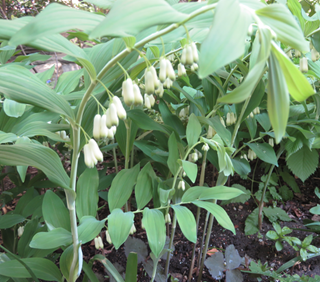
True Solomon’s Seal
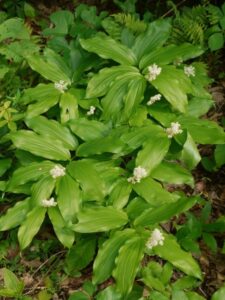
False Solomon’s Seal
Correct identification is important whenever wildcrafting medicinal herbs. In this case, True Solomon’s Seal must be differentiated from False Solomon’s Seal (Smilacina racmosa.) Both grow in the same places, sometimes next to each other, both have a similar appearance, with similar leaves and roots.
The flowers and fruit are the easiest way to tell them apart. The Flowers of True Solomon’s Seal appear at the leaf joints and are drooping, and bell-shaped. The flowers of the false appear in little terminal clusters of white starlike flowers at the end of the stalk. True Solomon’s seal has blue/blackish berries, the false’s berries are red. At first glance, the leaves and roots even look the same. But the leaves of the true wrap or fold around the stem while the false arises from a single node on the stem. The roots of the false has smaller rhizomes than the true, although, the resemblance to twisted knuckles and vertebrae is the same. They both have seals on the roots.
Part Used, Preparation and Dosage
The root is collected in the fall, after berries have dropped. It is then either processed into a tincture or dried for use as a decoction. The roots may also be used fresh to treat bruises, strains, sprains, and other wounds.
- The tincture is best made with low alcohol content 30% – 40%. High alcohol and high heat damages mucilage content. A low dose of 3 to 7 drops, a few times per day is usually sufficient. If after a week or so no change is seen, the dose can be increased slowly to as high as 30 drops 3x per day. I have never seen this much needed; usually about 5 drops is enough.
- A decoction is made by first soaking 1 oz of dried root in 16 ounces of water for about an hour. Slowly bring it to a boil. Remove from heat. The dosage is 1-4 ounces 3x per day.
Medicinal Actions
Astringent, Nutrient (The Native Americans harvested the roots for food,) demulcent, tonic, restorative, anti-inflammatory, and laxative.
Energetically
Solomon’s Seal is sweet, moistening, cool, restoring, dissolving, and relaxing.
Medicinal Use of True Solomon’s Seal
Although not referred to such in the literature, Solomon’s Seal seems a perfect example of an herbal trophorestorative. An herbal trophorestorative is a “smart herb” that brings the body to harmony in whatever area for which it has an affinity. Solomon’s Seal seems to do just that. With affinities to the muscular-skeletal system, digestive, and respiratory systems, this herb seems to strengthen weakness and soften excess as it tones and heals all around.
Solomon’s Seal is well indicated when dryness or general weakness and irritability is at the root of the inflammation. Its use helps sooth local nervous tissue while providing a solid strengthening action.
Muscular-Skeletal actions
Popular herbalist Jim McDonald says that Solomon’s Seal is without a doubt the most useful remedy he knows for treating injuries of the muscular-skeletal system. Matthew Wood in his Book of Herbal Wisdom says, “Solomon’s Seal has the intelligence to heal bone in the right place.” The more I use and study this herb, the more valuable and versatile it becomes.
First, this herb has the remarkable ability to restore proper tension to ligaments, whether too tight or too loose. It feeds and lubricates ligaments, tendons, and muscle attachments, resulting in stronger and more harmonious functioning. It helps calcify bones, making them stronger, while also decalcifying excess to remove unhealthy deposits (like bone spurs and bunions.) Solomon’s Seal is useful when treating broken bone, injured tendons, misalignments, tendonitis, arthritis due to dryness in the joints, “slipped” or herniated discs, general abdominal, uterine, and rectal prolapse and for treating sports related injuries of all kinds.
Think of using Solomon’s Seal both before resorting to medical treatments like surgery and as a supportive therapy after such medical interventions.
Digestive System/Mucous Membranes/Lungs
Solomon’s Seal works to decrease mucus discharges with a gentle tonic action that is well employed in cases of chronic and sub-acute irritation and weakness. Historically, it has been used to heal stomach and intestinal complaints, to treat tuberculosis in the lungs, and to loosen mucus in the lungs for dry coughs.
Solomon’s Seal acts as a mucilaginous tonic that is both tonic and restorative to the mucous membranes of the entire digestive system. It is an excellent choice for the treatment of intestinal inflammation, chronic and acute dysentery, piles, or hemorrhoids and even worms.
Skin and external use of Solomon’s Seal
The herb has a strong history of use as a cosmetic to remove unwanted blemishes, heal damaged skin. If you think about it, this makes sense. Mucous membranes are an internal kind of skin. Usually when a substance brings harmony to the inside, it usually has similar favorable effects on the outside, thus, healing and protecting the skin.
As an external healing agent, Solomon’s Seal is particularly helpful as a remedy for bacterial skin infections effecting the upper dermis layer of the skin. These kinds of conditions, including poison ivy, are usually hot, itchy, and uncomfortable.

The powdered root is used for skin rashes, as a poultice for bruises, black eyes, inflammation, and to heal wounds and tumors. Nicholas Culpeper, 19th century herbalist, writes, “Solomon’s Seal is healing for wounds, hurts, and outward sores. It will close the lips of sores that are green.”
Other Uses
Some find Solomon’s Seal useful for those who need a little help being flexible and graceful when expectations don’t match up with realities. At these times, the herb is said to offer the feeling of being firmly grounded and secure. Even when things are changing fast, and the outside world is not going as we’d like. As a medicine, it may be a nice support.
Solomon’s Seal Recipes
Possible recipe for acute connective tissue issues (like a herniated disc or sports injury) – From Jim McDonald
Mix individually prepared herbal tinctures.
- 5 parts Solomon’s Seal root
- 3 parts Mullein root (Verbascum Thapsus)
- 3 parts Horsetail (Equisetum arvense)
- 1 part goldenseal root (Hydrastis canadensis)
Dosage suggestion – 5 to 7 drops several times throughout the day
Contra-Indications/toxicity
The berries are toxic and should not be taken.
Higher doses of Solomon’s Seal may interact with diabetic medications causing low blood sugar.
Further Reading

Healing the causes of suffering – A four-step model for healing
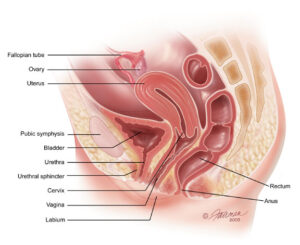
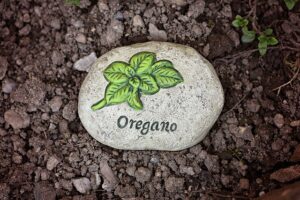

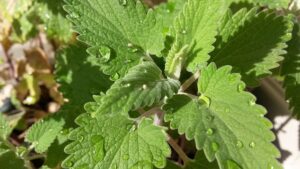
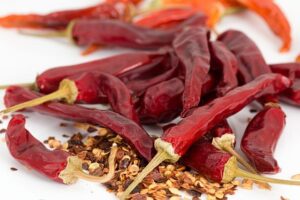
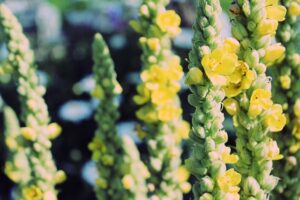
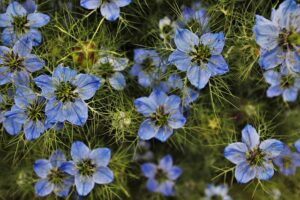
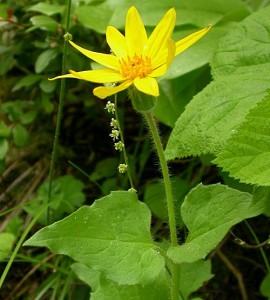


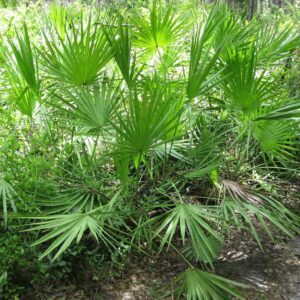

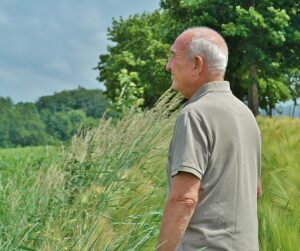

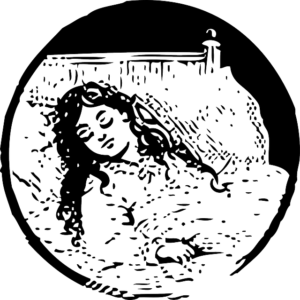






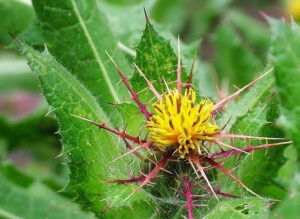


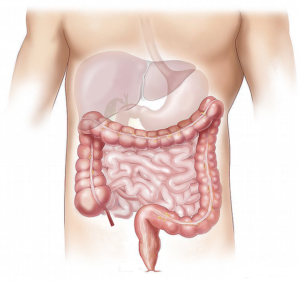
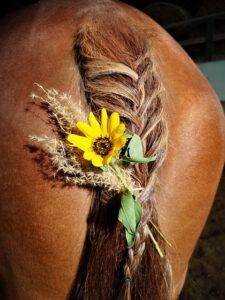
References
https://www.botanical.com/botanical/mgmh/s/solsea63.html
https://www.herbcraft.org/solseal.html
Swift, Katia; Supporting Your Child Through Puberty, Part II: It’s Not Just About Hormones.; Plant Healer Magazine, volume IV 2014.
https://www.6bcgarden.org/solomons-seal.html
http://identifythatplant.com/false-and-true-solomons-seal/
Wood, Matthew; Book of Herbal Wisdom; North Atlantic Books, Berkley Ca. 1997
Culpepper, Nicholas; The Complete Herbal and The English Physician; 1814. Reprinted by Meyer Books, 1985
Thomas Easley, Patricia Howell, Danny O’Rawe; Bioregional Materia Medica in Clinical Practice; American Herbalist Guild Symposium notes, 2018
Disclaimer
The statements and ideas presented here are not intended to diagnose, treat, cure, or prevent any disease or condition. They have not been evaluated by the FDA. All ideas presented are for the sole purpose of education. To help you take control of your own health. If you have a health concern or condition, consult a physician. We suggest that you always consult a medical doctor before modifying your diet, using any new product, drug, supplement, or doing any new exercises.
These statements and products have not been evaluated by the FDA. They are not intended to diagnose, treat, cure, or prevent any disease or condition. If you have a health concern or condition, consult a physician. Always consult a medical doctor before modifying your diet, using any new product, drug, supplement, or doing any new exercises.
Herbs taken for health purposes should be treated with the same care as medicine. Herbal remedies are no substitute for a healthy diet and lifestyle. If you are serious about good health, you’ll want to combine diet, exercise, herbals, a good relationship with your doctor and a generally healthy lifestyle. No one of these will do it alone.
This information is designed to be used as part of a complete health plan. No products are intended to replace your doctor’s care, or to supersede any of his/her advice or prescriptions.

